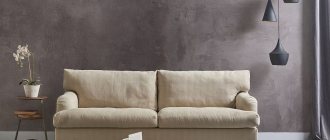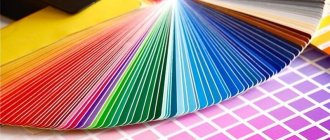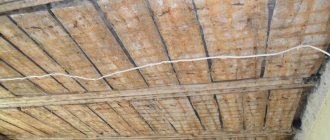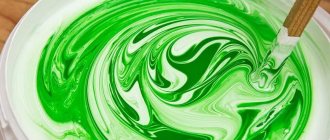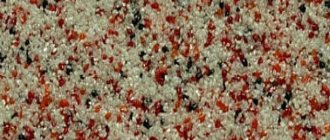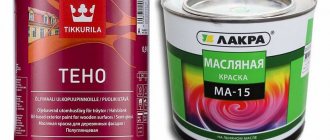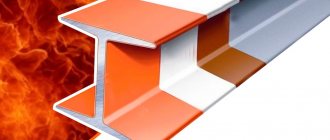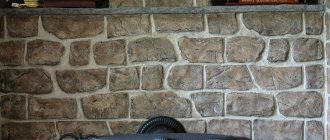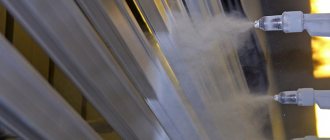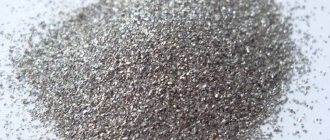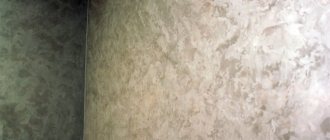Powder painting is fundamentally different from traditional liquid painting. Here, the process of applying the dye does not occur in the form of a viscous substance (which is ejected from the spray gun nozzle under the influence of mechanical energy), but in the form of tiny particles of dry dye.
The adhesion of particles to the surface being painted occurs due to their electrification, as a result of which they acquire a charge different from that possessed by the surface. Then everything happens in accordance with the well-known Coulomb law on the attraction of unlike electric charges. The strength of electrification determines the strength of adhesion.
Types of powder coating guns
Powder coating can be done in two ways: by immersion and by spraying the dye.
The first option is a very complex technological process, therefore it is used only in production conditions for painting large objects (corrugated sheets, metal structures and frames). The spraying method is carried out using a gun; this method is available for painting at home. The operating principles of pistols allow them to be divided into several types.
Electrostatic
An electrostatic spray gun allows you to process surfaces regardless of their shape. Promotes the appearance of ultra-thin coatings, usually their thickness reaches only 30-250 microns. This is an economical option that will not be labor-intensive when dealing with maintenance. That’s why this pistol is the leader on the modern market. If necessary, it won’t even take much time to replace the paint.
Tribostatic
The tribostatic gun is distinguished by the absence of a particle generator in the usual sense of the word. The charge is formed due to the fact that the particles of the paint and varnish material rub against each other. The difficulty of obtaining a sufficient charge with paint is the main difficulty faced by owners of tribostatic devices when painting. A precise adjustment of the primary paint is required.
Fluidized
This type of sprayer is designed to apply paint layer by layer. Therefore, it is easy to gain sufficient thickness. Usually it is at the level of 250 microns. Thanks to the use of technology, it is easier for the master to monitor what the thickness of the spray remains at each specific moment in time, using a sprayer.
Preparatory work, operation of the coating and sprayer in this case are really cheap and do not require additional expenses. But this option also has disadvantages, including:
- the requirement for the surface to be treated to have a simple shape on which the powder spraying process is organized;
- the need in any case to pre-heat the part with your own hands and then dry it;
- increased paint consumption during surface treatment;
- This technology also requires the use of a metal that is resistant to high temperatures.
On video: the best sprayer for powder painting at home.
This is interesting: What and how can you make a paint brush?
Powder painting technology
The painting technique is very simple. An electrified special gun performs the procedure of spraying coloring particles - they are distributed in an even layer over the metal surface being processed. The technology is based on electrostatic spraying. In other words, painting is done thanks to triboelectricity. During the process, the coloring composition is firmly fixed on surfaces due to treatment at high temperatures. This is the key to creating the most durable coating. Next, the processed element is sent to a polymerization oven.
Spray guns
Powder dye is a solid mass that consists of many small particles. It does not need to be kneaded and therefore, as mentioned above, this dye has become very popular.
At first, this paint was made for the oil industry as a coating like varnish. It was needed to make enterprises safer and free of fire hazards.
But gradually it flowed into everyday life and is now used for painting cars and other things.
Video:
There are two ways to paint objects with dry paint - spraying or dipping.
The first method is accessible to almost everyone, the second is more problematic, since it is needed for very large objects and products - up to several meters in length and width.
After painting, the item should be dried in the oven so that the paint adheres better. This method requires large dimensions of the room for painting; doing it yourself is problematic.
But to paint anything at home, you need to use a paint gun, which can be easily purchased at a hardware store.
There are two types of such guns - tribostatic and electrostatic. The first type is simpler - the paint simply comes out of its container to be sprayed onto the surface.
However, this device can only spray epoxy paint. If you use other types of dry dyes, then you need to mix them with various solvents and mixtures.
The second type of pistols is electrostatic. This device has a more complex design than the first one.
The principle of its operation is the creation of an electrostatic field in which a low-frequency signal penetrates the electrode and forms a field, after which paint particles are sprayed. The electrostatic gun is suitable for almost all types of dry paint.
Depending on the above characteristics, you need to make your choice, but you must remember that such equipment is not cheap.
If you don’t plan to do any grandiose coatings with dry paint yourself, then you can purchase a tribostatic gun.
It contains paint in a 0.5 liter container; you can change it if necessary. Although its design is quite simple, it can serve you for a long time and paints small and medium-sized objects well.
Video:
True, one of its disadvantages is that the parts that make it up quickly become unusable, but they can be replaced.
If you need to paint large volumes, then electrostatic guns are suitable - they paint even better than the first ones, the layer is more even, but they paint medium and small products with a complex design worse.
Types of dry paints
Dry paints contain various pigments, resins, fillers and other additives.
Powdered dyes are now used in many areas, and their number is growing as the industry rapidly develops. Powder paints can be divided into two groups - thermosetting and thermoplastic.
The former includes a thermosetting film former. During painting, a uniform layer is formed during chemical reactions and melting of its particles.
This group includes epoxy paint, polyurethane and polyester, which contains resin.
Polyester dyes are good for painting items in the yard of a house, for example, for a playground, since weather conditions do not affect it in any way, the paint holds well.
Epoxy enamels are also very resistant, do not dissolve, but can turn yellow if the painted product is overheated.
Due to excess ultraviolet radiation, the topmost layer of such paint is destroyed. But polyester-epoxy paint does not turn yellow from excess heat and light, although they have a similar composition and can withstand higher degrees.
Acrylate dry paint is needed for objects that are actively used. It can withstand alkalis and high temperatures, and is also durable and retains its brightness for a long time.
Video:
Polyurethane powder dye has a shine. It is best used on items that are subject to wear and tear and are constantly subject to friction to protect and preserve them.
And the dye also has an attractive feature - it can be used to create the effect of compressed silk, which looks good in the interior.
This paint is waterproof and does not react to solvents, liquid fuels and various mineral oils.
Thermoplastic dyes are more natural, but less durable. Most often they are used for installation inside and outside the house, as well as for painting various products and objects to protect them from damage and corrosion.
This paint is sometimes used to paint interior items and even parts of washing machines and dishwashers to prevent the action of detergent.
Powder coating principles
Powder painting is fundamentally different from traditional liquid painting. Here, the process of applying the dye does not occur in the form of a viscous substance (which is ejected from the spray gun nozzle under the influence of mechanical energy), but in the form of tiny particles of dry dye.
The adhesion of particles to the surface being painted occurs due to their electrification, as a result of which they acquire a charge different from that possessed by the surface. Then everything happens in accordance with the well-known Coulomb law on the attraction of unlike electric charges. The strength of electrification determines the strength of adhesion.
The acquisition of a positive or negative charge by initially electrically neutral particles can occur in two ways:
Electrostatic, when a powder particle is charged from an external source. Therefore, powder guns that implement this principle are called electrostatic;
From the kinetic energy of friction between adjacent particles that fly out of the nozzle of a paint gun at high speed. Since in this case the tribostatic effect is used, the pistols received the same name.
Regardless of the energy source that charges the powder, the uniformity of the charge level leads to the fact that the sedimentation of dye particles occurs much more evenly, and is not associated with compressor pressure drops, the force of pressing the trigger and other factors.
In addition, dry powder paint is more environmentally friendly because it does not contain toxic organic solvents. However, it is recommended to use a respirator when painting.
There are also limitations in the use of powder paints. For example, in order to increase the surface activity of the surface being painted, it is recommended to heat it to 150...200°C. Otherwise, the adhesion force of unlike charges decreases, which will affect the durability.
The essence of the technique
Powder paint is sprayed onto a clean metal surface. During spraying, the particles receive an electrical charge from an external source or are electrified by friction. Thanks to the electric field, the particles are directed towards the metal, which has the opposite charge. Particles that do not settle are collected in the spray booth and can be used for repainting. The painted part is then sent to a polymerization chamber.
Scheme for applying a conversion sublayer of powder painting
By forming a surface layer of powder paint, a monolithic, high-quality structure is created that protects the base material. The coating is formed by heating the painted layer to a melting state. Further surface finishing involves hardening (for thermosetting materials) or cooling (for thermally plastic materials). The result of the treatment is the formation of a hard surface film.
Read more about how to do powder coating yourself.
What is the essence of powder coating?
Powder paint is usually sprayed onto a clean metal surface. From an external source, the particles of the material receive an additional charge, or electrification, in which the powder paint sprayer is involved, occurs during friction.
The field using electrostatic particles causes the dye itself to combine with the metal, which has the opposite charge. Particles that have not settled on the surface are collected inside the spray booth and electrostatic equipment. They can be used for repeated painting with a spray gun.
After completing the previous stages of work, the painted parts are placed inside a special chamber for polymerization.
Powder paints lead to the appearance of a high-quality monolithic structure, and a surface layer is formed. This structure provides additional protection to the base material. The coating is formed by using a method of heating the painted layer until it begins to melt. Further finishing promotes hardening. For materials with thermal plasticity, at this stage, on the contrary, cooling is carried out.
The result of processing is the appearance of a special film on the surface, resulting in a smooth and durable polymer coating. This means that the powder coating was successful.
Powder gun design
A spray gun for powder coating, of course, differs from its industrial counterpart in power, small dimensions, paint hopper and other parameters. At the same time, it makes it possible to perform a very diverse range of paint applications on many materials.
A standard powder gun consists of the following elements:
- converter,
- powder paint bin,
- buttons to turn on,
- adjustment knobs,
- union,
- indicator,
- power unit,
- wires for grounding,
- lever
There are two main methods of applying powder paint using a powder gun - electrostatic and tribostatic.
The first method is considered the most effective and is suitable for epoxy, polyurethane and polyester powder materials.
The second method is less productive and allows you to use only epoxy paint; other powder materials can only be used after mixing with special additives.
This is interesting: How does the use of a pressure gauge affect the operation of the spray gun?
Larius powder paint guns
Electrostatic powder gun CH200
For applying powder paint using the powder paint corona charge method.
Operating voltage 220 V AC. Output voltage 0-120 kV s.s. Rated current 0-190 µA. Polarity NEGATIVE Length 360 mm. Weight 690 g. Instructions for use of the CH200 gun
Tribostatic powder gun TRIBO
For applying powder paint using the tribostatic method.
There is no rated current. There is no output voltage. There is no operating voltage. Polarity POSITIVE Length 450 mm. Weight 590 g. Instructions for using the TRIBO gun
Electrostatic spraying
Powder coating technology by electrostatic spraying.
Rice. 1 – Corona charging technology
Its popularity is due to the following factors: high charging efficiency of almost all powder paints, high productivity when powder coating large surfaces, relatively low sensitivity to ambient humidity, suitable for applying various powder coatings with special effects (metallics, shagreen, mauara, etc. ).
Along with its advantages, electrostatic spraying has a number of disadvantages, which are caused by the strong electric field between the spray gun and the part, which can make it difficult to apply powder coating in corners and in deep recesses. In addition, incorrect selection of electrostatic parameters of the sprayer and the distance from the sprayer to the part can cause back ionization and degrade the quality of the polymer powder coating.
Equipment for powder coating - an electrostatic spray gun is included in the standard Alfa Color powder coating complex.
Rice. 2 – Faraday cage effect
The Faraday cage effect is the result of electrostatic and aerodynamic forces.
The figure shows that when powder coating areas affected by the Faraday cage effect, the electric field generated by the spray gun is at its highest intensity at the edges of the recess. The power lines always go to the closest grounded point and are more likely to concentrate along the edges of the recess and protruding areas, rather than penetrating further inside.
The Faraday cage effect is observed in cases where powder paint is applied to metal products of complex configuration, where an external electric field does not penetrate, so applying an even coating to the parts is difficult and in some cases even impossible.
Rice. 3 – Reverse ionization
Back ionization is caused by excessive free ion current from the charging electrodes of the atomizer. When free ions hit the powder-coated surface of a part, they add their charge to the charge accumulated in the powder layer. But too much charge accumulates on the surface of the part. At some points, the amount of charge is exceeded so much that micro sparks jump through the powder, forming craters on the surface, which leads to a deterioration in the quality of the coating and a violation of its functional properties. Reverse ionization also contributes to the formation of orange peel, reducing the efficiency of sprayers and limiting the thickness of the resulting coatings.
To reduce the Faraday cage effect and reverse ionization, special equipment has been developed that reduces the number of ions in ionized air when charged powder particles are attracted to the surface. Free negative ions are diverted away due to the grounding of the atomizer itself, which significantly reduces the occurrence of the above-mentioned negative effects. By increasing the distance between the spray gun and the surface of the part, you can reduce the spray gun current and slow down the reverse ionization process.
Controlling Powder Paint Spray Equipment
The forces that influence powder paint release and charging are the feed system and the charging system. The delivery system moves the polymer powder paint from the container to the gun tip and then out as it is sprayed. The charging system charges the powder material so that it can be attracted to the object and adhere to the surface of the object until it is completely cured.
Pneumatic Control
There are generally three types of air pressure control: dilution air, powder paint air and powder atomizing air. Some guns also have other types of air control in the gun tip for shaping or air for cleaning the electrode. The set of these control types affects the amount of incoming powder, its feed rate and the uniformity of the powder cloud. This in turn has a significant impact on transfer efficiency and product quality.
Thinning Air
Diluting air enters the bottom of the hopper to suspend the powder paint and form a mixture with it, facilitating the process of drawing the powder out of the hopper using a Venturi lift. If the powder has geysers and bubbles, the air pressure is too high. If the powder moves slowly and unevenly, the air pressure is too low. Properly liquefied powder resembles gently boiling water, in motion, with a fairly smooth surface. Incorrect dilution pressure can result in uneven flow of powder into the gun tip.
If air pressure control does not result in proper dilution, the separating membrane may be damaged by oils or moisture in the air line. All air entering the powder system must be clean and dry.
Air for Supplying Powder Polymer Paint
The air hose that supplies the powder paint is attached to the Venturi lift. Air passes through the venturi, creating a vacuum that draws the powder out of the hopper or powder box. Pressure adjustment controls the volume and speed of powder paint supply. This is the first adjustment made to the gun. With the atomizing air turned off, the powder flow is set to a standard level, say 20-25 psi. Powder exits the gun body unevenly until atomizing air is added.
Atomizing air
The atomizing air is increased from about to the level necessary to ensure a smooth and uniform powder figure. Care should be taken to avoid over-atomizing air. Its purpose is to provide energy to distribute the powder and move it along the powder tube. Excess atomizing air will cause powder to be delivered at a rate that causes excessive overspray and powder paint to bounce off the surface. Typically the atomizing air has a velocity that is the same or lower than the powder paint supply air. After adjusting the atomizing air, it may be necessary to slightly increase the air flow to equalize the back pressure created by the atomizing air source.
Purifying Air or Shaping Air
Some manufacturers develop additional air supply at the tip of the gun to keep the electrode clean or to shape the powder figure. This may help keep the electrode from growing during impact nuclear fusion. This is especially useful when sputtering metal particles due to the tendency of metal flakes to accumulate on the electrode.
Venturi lift pumps
The Venturi lift pump draws powder from the liquefying hopper or powder box, crushes it and moves it into the gun tip in an adjustable and level pattern. A good Venturi pump has a minimum of parts, is easy to remove from the hopper, and is lined on the inside with inexpensive, replaceable plastic gaskets. To maintain desired powder output, these gaskets must be inspected regularly and replaced when the orifice size increases and causes flow rates to increase.
Air Pressure and Transfer Efficiency
All powder coating equipment manufacturers have worked to reduce feed pressure to ensure high charge productivity. Typical air pressure for powder delivery ranges from 10 to 40 psi. The atomizing air must be adjusted to a level that provides a uniform spray pattern from the gun. Reduced air pressure has a positive effect on this process.
• Powder charges better because it is more susceptible to corona
fields.
• Equipment longevity is improved because the powder is less abrasive at low speeds.
• Low pressure generally results in better transfer efficiency and less overspray. This means that less powder is recycled.
• Easier to control film thickness and uniformity.
• Less film thickness means more cost and less orange peel.
Controlling Powder Loading Using Volume
Another powder supply parameter is the control of the powder flow rate, measured in volume. There are metric systems, such as the auger loading system, that can measure powder flow in grams or ounces per minute and thereby equalize variations in plant air use, fluid bed level, gun and hose movement, and other variations. These systems make continuous adjustments to provide a standard powder delivery volume, controlling the powder flow at a higher level than a standard Venturi pump. This provides increased film control and excellent material savings in operations that are expected to produce thick films.
Voltage control
Corona load pistols have adjustable voltage levels from 30 to 100 kilovolts. Application process parameters, such as the powder substance, the item being coated, and the distance between the gun and the object, respond differently to different voltage levels and electrical current circulation. There is an optimal current level for the best possible First Deposition Transfer Efficiency (FTET) under a given set of variables. Typically 10-20 µA (microamps) of gun current is the optimal range for the highest level of transfer efficiency. Lower current levels promote depth of penetration into the Faraday cage zones. Smooth surfaces can be coated at a higher gun current level of 20µA.
As the distance between the gun and the object decreases, the voltage decreases and the current flow increases. When the gun current level rises above the optimal level, more ions are created in the space between the gun and the object. The added ions move to the work surface at a much higher speed than the powder particles and quickly add charge to the surface, promoting rapid back-ionization.
There is one important relationship: the current-to-surface ratio. The more free ions are concentrated on the surface of an object, the more likely they are to cause application problems. If the spray gun moves closer to the surface, the current circulation increases and the surface of the object receives more free ions. To make matters even more difficult, the perimeter of the surface in contact with the field lines narrows as the electrode approaches the surface, and excess free ions are concentrated in a small space.
See in the figure on page III/36 how the field lines are concentrated in a small space as the gun approaches the surface of the object. This can cause accelerated back ionization and application problems, especially since the current increases and adds more free ions as the gun approaches. This can be expressed in the following equation.
10" apart 3" apart
gun and object gun and object
20 (µA) 60 (µA)
8 (sq. inches) 3 (sq. inches)
As the equation shows, the higher the current, the smaller the surface area. Thus, the amount of charge on the surface is significantly greater at close distances between the gun and the object.
When using automatic application equipment, the voltage regulation can be set and the current level will remain stable, except for objects with very irregular geometric shapes. If the geometric shape of the object is incorrect, the current may change. When operating manually, the sprayer moves the gun further and closer, causing the current level to fluctuate significantly. In many cases, manual spray operators will get very close to the surface of the object and obtain amperage levels well above the optimal level to achieve good EPD.
With automatic control of current circulation, the load line reacts to the resistivity of the circuit as the gun moves closer and further. The voltage decreases, but the current remains at the set level.
It may be that reducing the voltage will also reduce the field strength and charging performance of the spray gun. In fact, if the gun gets closer to the object and the voltage decreases, the field strength remains the same.
Tribostatic spray gun
A tribostatic powder gun or spray gun works on the principle of multiple collisions and friction of powder paint particles, as a result of which they are charged. This process occurs in a special unit of the gun, where the particles actively interact with each other.
Since the use of current is eliminated during charging, there is no electric field, which means there is no reverse ionization effect.
This gives the following advantage: powder paint freely penetrates into all hard-to-reach places of the relief and porous surface and is evenly distributed, which guarantees the quality of spraying. It also becomes possible to paint the surface multiple times, achieving a layer of the desired thickness.
Among the disadvantages of the tribostatic painting method, one should note a limited selection of paints, mandatory sandblasting of metals before painting, and low productivity. And the tribostatic powder gun itself has proven itself to be a very capricious device in operation.
Equipment
According to the operating principles, equipment is usually divided into several types:
- Electrostatic. Allows you to obtain ultra-thin coatings - in the range of 30-250 microns. Also, using electrostatic devices, you can process parts of any shape. The equipment is not labor-intensive and economical to maintain. If desired, changing the paint will not take much time. It is also worth noting that there is no need to preheat the products. The main disadvantage of electrostatic devices is their high cost.
- Tribostatic. Systems of this type operate without a particle generator. During the spraying process, a charge is formed due to the friction of particles of paint and varnish material against each other. A significant disadvantage of tribostatic devices is the difficulty in providing sufficient charge, which is why adjustment of the primary paint is often necessary. It should also be noted that the quality of charging depends on the level of humidity, the rapid decrease in charge during operation and the not very active deposition of powder.
- Fluidized. Equipment of this type is designed for layer-by-layer application of paint. This approach ensures sufficient layer thickness (approximately 250 microns). Moreover, the technology allows you to largely control the thickness of the spraying. In addition, preparatory work and further operation of the coating are inexpensive. The disadvantages of fluidized equipment include: increased paint consumption, the requirement for preheating and drying of the part, and the requirement for a simple shape of the surface to be treated. In addition, the metal must be resistant to high temperatures.
Advice! Powder paints, although not classified as substances that require increased safety measures, still contain some dangerous substances. These include lead, cadmium, triglycylisocyanurate hardener, allergens, epoxy resins. Therefore, before working with powder formulations, you should protect your respiratory system.
Principle of operation
Regardless of the size of the pistol, its operation diagram is as follows:
- the spray bottle is filled with charged particles of paint and varnish material;
- an accumulation of charged colored particles is created next to the object being processed;
- the product is grounded and treated with attracted particles.
The complete scheme contains the following components:
- chamber for loading workpieces;
- rotating devices for hanging products;
- spray chamber;
- cyclone for forming and charging paint particles;
- filter layer;
- unloading chamber;
- lines for feeding parts moving at low speed;
- chamber for polymerization of paintwork;
- fan;
- an automatic process control system that controls all ongoing processes, recording in detail what is happening for subsequent analysis;
- a lamp that allows the outside to see what is happening inside the system;
- a compartment for preparing compressed air, which will then trigger the release of paint;
- powder coating gun.
Design of a powder coating gun
The gun itself is based on the following scheme:
- air duct;
- paint supply channel;
- ground line;
- charging surfaces;
- powder-air mixture;
- nozzle for dispensing and spraying the composition outward.
Powder coating machine Larius CH 200
We present to your attention an autonomous powder painting installation AD CH 200-TRIBO from LARIUS.
The main advantage of this powder spraying machine is that it can be used as an electrostatic generator for powder guns from the CH 200 series, as well as an electrostatic charge control device for automatic and manual LARIUS TRIBO guns, a switch is provided to change modes.
This powder spraying installation allows you to use:
- spray gun for corona (charge powder with high voltage electrodes)
- and a triboelectric type spray gun, where the powder is charged by friction
The installation also allows you to frequently change the color of the paint, while the powder is taken directly from the factory packaging. To change the color you just need to replace the powder box and clean the suction pipe.
Powder guns Gema Models
Manage complex coverage requirements and a high degree of automation. An efficient solution for high quality robotic application systems
Highest transfer efficiency, excellent application quality and ideal color change solution
Provides significant powder savings and superior application quality over long periods of time with reduced operator fatigue
A specially designed gun for electrostatic application of enamel powder provides the highest strength and effectiveness of the coating.
The OptiSelect powder gun's excellent ergonomics and lightweight design ensure reduced operator fatigue
Compact and easy to use manual and automatic guns using triboelectric charging technology
A few examples of paints
As an example, we can cite two Turkish-made spraying installations from Promaks - CM-10 and 2CM-10.
The PROMAKS CM10 manual spraying installation allows you to use a wide range of paints and varnishes, including metallic and antique. It is also possible to paint glass and ceramic objects. The CM-10 provides a continuous and stable supply of paint, resulting in a very uniform coating. The equipment is easy to use.
Among the technical characteristics of the installation are:
- adjusting electrical parameters of equipment manually;
- grounding the powder supply hose;
- pressure level release button;
- fine filter;
- ability to control material consumption and volume of supplied air;
- minimum output current - 130 μA;
- operation from a standard network is possible at 220 V/50 Hz;
- the device provides a voltage charge of 10 kW, thanks to which all types of powder paint can be charged;
- Due to the special design of the nozzles, the installation is capable of painting even the most remote areas of the surface;
- if necessary, paint replacement is carried out in a short time;
- the approximate consumption of powder paint is 150 grams per square meter;
For large areas, the Promaks CM10 installation is considered one of the best representatives of this class of equipment.
Promaks also produces the Promaks 2CM-10 installation. It is almost 2 times more expensive than Promaks CM10: its price reaches 160 thousand rubles. However, the higher cost is justified by the reduced consumption of powder paint (120 grams per square meter), as well as the presence of an additional control module. In addition, the kit includes a second gun with hoses and wires for it.
If you need to paint a small surface with your own hands for household purposes, then there is probably no need to purchase specialized equipment. If you need to regularly paint dozens or hundreds of parts, you cannot do without a professional painting installation.
Modern paint and varnish materials make it possible to create a high-quality and durable coating on any surface, regardless of shape and texture. One of the popular new products is powder paint. This raw material is a solid, finely dispersed mass that does not require additional mixing. This type of paint has become a real breakthrough in the field of finishing coating. Initially, powder paint was developed for the oil refining industry as a paint coating (LPC) with an increased protection level. At the moment, powder paint is actively and widely used in everyday life and in the automotive industry.
Electrostatic spray gun
An electrostatic powder gun functions as follows: powder paint is supplied through one channel, and compressed air, which must be dry and clean, is supplied through the other.
Inside the gun, the particles of the dye are charged at a power of 60-70 kW, which gives them the opportunity to be attached to the surface. This is how coloring occurs. Almost all powder paints are effectively charged, ensuring high-quality coating.
The electrostatic method has its drawbacks, among which it is worth noting the emergence of an electric field between the spray gun and the surface being treated. This reduces the quality of powder paint spraying on surfaces with complex terrain. At the same time, the thickness of the coating decreases.
This effect is called the reverse ionization effect. To avoid creating one when painting, you should extremely accurately calculate the distance from the nozzle of the spray gun to the surface, be sure to take into account the electrostatic characteristics of the powder paint, properly ground the device and regulate the current.
Design Feature
The design varies depending on the type of equipment used, since tribostatic guns generally have fewer components. This is a working handle, a tank or funnel, a nut, the inner rod of the tribostatic barrel and the body of this barrel. The gun itself is connected to the compressor. Electrostatic guns are somewhat more complex in their design, since there is a housing with a control panel, a paint tank, a converter with a power supply, a spark gap, an electrode with a nozzle, and cables.
Important. For electrostatic guns, it does not matter what type of powder paint is used.
It can be polyurethane or polyester powder. The painting efficiency will be the same.
Electrostatic powder coating guns
The design of such devices is more complex. The electrostatic powder coating gun consists of the following parts:
- A housing with a handle on which the control panel is located.
- A tank filled with coloring powder.
- Arrester with an electromagnetic trap.
- Converter (sometimes supplied with a power supply).
- Electrode with nozzle.
- Power and grounding cables.
Since the electrostatic field is created here forcibly, any polymer paint, for example, polyester or polyurethane, is suitable for electrification, which gives the electrostatic gun a certain advantage over the tribostatic one.
Provided that dry and clean air is supplied to the mixing chamber (which occupies most of the internal volume of the housing), the charge acquired by the powder particles turns out to be significant. This allows the electrostatic gun to be used to paint large surfaces.
The sequence of operation of the device is as follows. The electrostatic field excited by the discharger creates a potential difference inside the chamber, since the outer part of the housing is grounded. Forces are created that actively mix the mixture and direct it to the exit from the chamber where the hollow electrode is installed. Its electromagnetic trap further accelerates the flow of charged particles and throws it out at high speed.
Since the surrounding air has its own humidity, the force of electrostatic attraction practically does not depend on the distance between the grounded surface of the product being painted and the gun. As a result, charged powder particles are uniformly deposited on the metal of the workpiece being painted.
A different principle of creating an electrostatic field is implemented in pistols from the German company Ransburg. It uses centrifugal spraying from a disk rotating at high speed. To charge the particles, a sliding contact is used, which is located on the disk itself.
The powder flow, under the influence of centrifugal forces, is broken into microjets and drawn out by an electromagnetic trap, after which it is directed to the surface requiring painting. The trajectory of particle motion is located along the magnetic lines of force of the electrostatic field, so the flow is always dense and uniform.
Safety precautions when working with a powder gun:
When working with a spray gun, certain rules must be followed:
– the room where painting work will be carried out must be well ventilated;
– the powder gun must be in good working order and properly grounded, especially for electrostatic guns;
– painting manipulations should be carried out in protective glasses and gloves, in shoes with rubber soles, which will prevent electric shock;
– periodically check the gun insulation;
– do not spray powder paint near an open flame, or at high temperatures, as this may cause it to ignite instantly.
Save
Save
Save
Save
Save
Powder pistol "Master" ("Master+")
The “Master” powder paint spray gun is a popular model that has proven itself well and is widely used for working with metallized powder paints.
These models of spray guns are made of impact-resistant materials, which has a positive effect on service life and also provides resistance to mechanical damage.
The design of the Master spray gun has a number of advantages:
- stable charge of powder paint and its minimal consumption
- the metal on/off trigger is durable, the pistol grip is ergonomic and balanced
- The location of the paint and air supply controls will save you from problems with instability of compressed air pressure
- a wide metal plate on the handle serves to remove static charge, which will relieve the operator of the spraying chamber from unpleasant sensations
- adjusting the voltage on the electrode allows you to paint products of complex shapes
- The transducer barrel bore is made of an extremely low friction material, eliminating paint sticking and the need for frequent barrel cleaning
A powder spray gun with external storage (spray gun) is also available.
Equipment and use of tribostatic sprayer
Powder paint appeared on the market not so long ago, but has successfully gained fans due to the success of its application. It allows you to create a high-quality and durable coating with a special mass (powder). This powder is easy to work with; you do not need to mix it or perform any complex actions with it. Initially, this paint was intended for oil refining production, but then it gained popularity in other areas, in particular small-scale production.
- it is convenient for working with objects of various configurations (both small and large);
- it is easy to use and operate;
- has high impact resistance;
- It is possible to regulate the application of a certain layer of paint in thickness.
You can buy a tribostatic gun in the following configuration: pneumatic gun, material tank, sprayer. The simplicity of the design determines the high properties of powder painting and high performance. The tribo sprayer is easy to adjust the spraying speed and has no electrical elements.
The tribostatic gun is offered to buy with various parameters depending on the customer’s needs. The average nominal productivity is 2.5 square meters per minute, air flow is no more than 3 cubic meters per hour, weight is no more than 1 kg.
